Are you dreaming of adding a stunning pergola to your outdoor space? A pergola can create a relaxing and stylish retreat in your backyard, providing a perfect spot for outdoor gatherings and relaxing afternoons.
But before you start planning your pergola, it’s crucial to ensure that it will be safe and sturdy enough to withstand the elements and any additional weight you might add, such as plants or hanging decorations.
One of the essential factors to consider is the size and strength of the beams that will support the pergola’s roof.
In this article, we will explore the question of how far a 6×6 beam can span for a pergola, taking into account various factors such as wood species, beam spacing, and load requirements.
We will also discuss some general guidelines for designing and building a pergola that will stand the test of time and provide a beautiful and functional addition to your outdoor space.
How Far Can A 6X6 Beam Span For Pergola?
According to the International Residential Building Code (IRC) of 2021, a typical span for a 6×6 softwood beam is between 3′-5″ and 8′-6″.
Wood’s strength is affected by a variety of variables. Steel and hardwood will span further, but their costs will differ significantly.
6×6 Beam Load Capacity
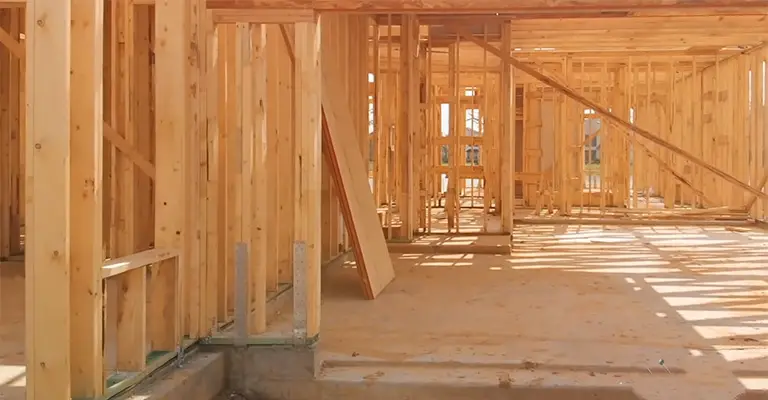
A 6×6 beam or header must support all structural members above it, plus any loads applied to it. It may not seem much, but 40 psf to 100 psf combined dead and live loads must be considered for structural integrity.
The load capacity depends on species, grade, wet or dry use, tensile strength, compressive stresses, horizontal shear, and Young’s modulus. You’re probably not an engineer if all that means little to you.
Most softwood 6x6s have a compressive strength of 500 psi wet and 1850 psi dry, though some species are stronger. For different wood species and conditions, the load per linear foot depends on the allowable bending stresses (Fb).
It can be difficult to determine the allowable unit stress for extreme fiber bending (Fb) for different wood species, which can depend on the grade and the use of the wood.
DF-L D-SS can carry over 2000 pounds per linear foot (PLF) or 8320 pounds per span based on allowable bending stresses (Fb) over a 4-foot span.
When the span is increased to 20 feet, the values drop to 41 PLF or 820 pounds per span and 83 PLF 1660 pounds per span, respectively.
The load that can be distributed evenly across that span can be calculated by multiplying that value. Nevertheless, structural issues and requirements may differ from the Building Code, and a structural engineer should be consulted.
How Far Can a 6×6 Header Span?
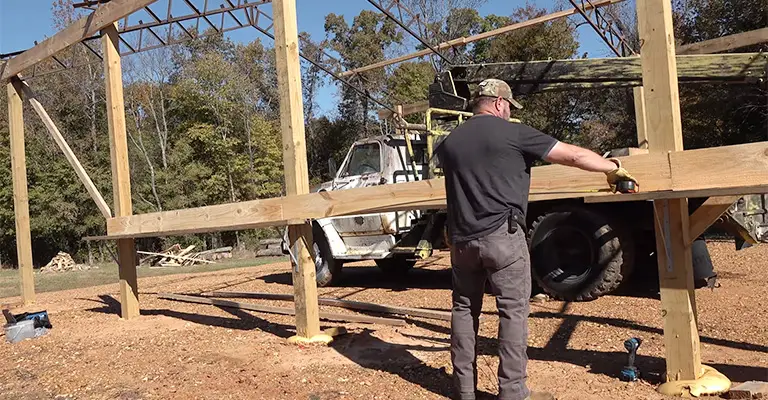
Loads can be carried by headers based on their location. There are several factors that affect the span of a building, including its exterior or interior, stud spacing, bearing or non-bearing, load expectations (snow and wind), and its floor level.
Standard dimensional lumber is more commonly used in most locations, even though a 6×6 is sufficient in some places to span six feet. In addition, a 6×6 frame would be too wide for a 2×4.
The depth of a 6×6 is the same as that of a double or triple 2×6 header, despite the fact that it is wider. Therefore, the compression values are similar.
6×6 headers can span anywhere from 2′-1″ to 7′-6″ depending on location, loads, etc. A structural engineer can provide more accurate span values.
How Far Can A 6X6 Beam Span Without Support?
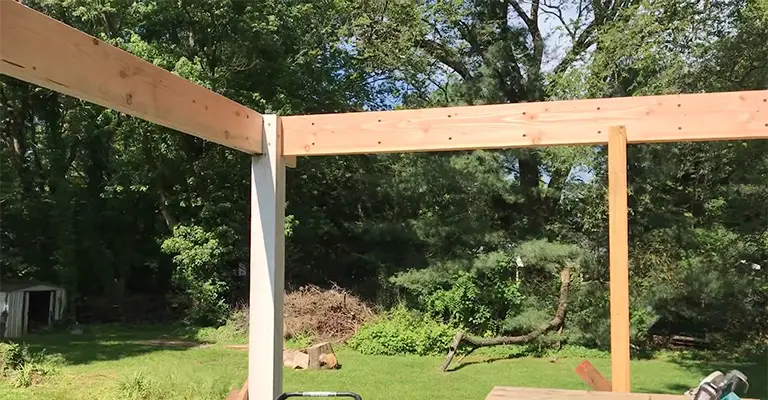
Depending on the species of wood, grade, grain orientation, moisture content, condition, and load, a 6×6 beam can span a variety of distances.
Compared to other common softwood species of the same grade, Southern Pine (SP) 6x6s will span 5″ to 8″. Hemlock-Fir (H-F), Spruce-Pine-Fir (S-P-F), and Douglas Fir-Larch (DF-L) span similar distances to Redwood, Cedar, Ponderosa Pine, or Red Pine.
With a 6×6, you can rotate it to align so the best grain direction surface is bearing the load. There are two ways to apply the greatest force: end-to-end or parallel to the grain.
The span distances are based on the weakest possible orientation, not the strongest, for curved or wandering grain lines.
Regardless of the timber’s grade, knots, splits, cracks, and holes affect its carrying capacity. ‘Clear’ wood doesn’t have these defects and will be stronger than wood with those defects.
Defects should be oriented to the sides instead of the top or bottom faces to improve strength. Choose a different 6×6 if the defects interfere with grain orientation.
Unlike any other piece of lumber, a 6×6 can span greater distances than permitted by the Code. It is graded for the weakest possibility since the load can be carried evenly, centered on the beam, or carried toward the ends.
When it comes to span distances, load ratings are an important consideration due to the fact that wood bends over time with only its own weight and gravity.
IRC-2021 specifies spans for triple 2×6 beams, but not for 6×6, which haven’t been commonly used for beams or headers for more than 50 years.
Since the depth of a 6×6 and a triple 2×6 are the same, and edge thickness is the main factor in compression, triple 2×6 span values are regularly used to determine 6×6 spans.
While 6x6s can be calculated and give a more accurate and slightly longer span, it’s probably better to leave it to a structural engineer since most Building Inspectors will use 3×6 span ratings unless stamped by one.
It will span between 7′-0″ and 8′-6″ for 6-foot joist spans, and 4′-2″ to 4′-11″ with joist spans of 18-feet depending on the load.
A 10 psf dead load reflects the weight of the structure and fixed materials, while a 40 psf to 70 psf live load reflects the weight of the snow. Design and building practices should use the span distances for triple 2×6 beams when using a 6×6 or leave the math to the professionals.
Which Is Stronger 6×6 or 3 2×6?
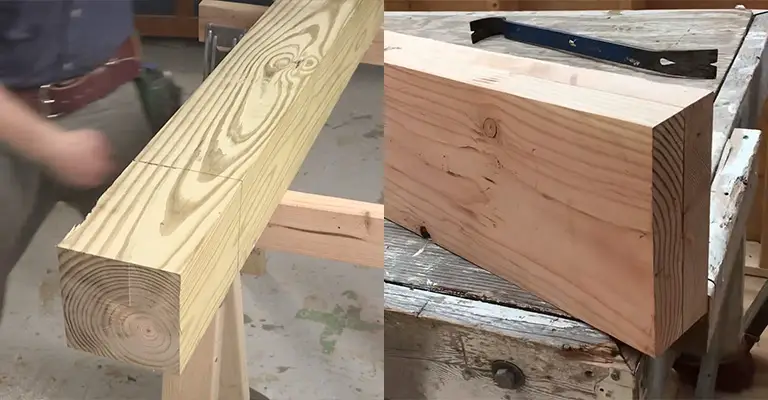
A 6×6 is 5-1/2″x5-1/2″ in actual dimensions, while a tripled 2×6 is 4-1/2″x5-1/2″. An inch wider than the 3-2/8 beam, it measures approximately 22% larger. In any case, the depth or edge thickness remains the same, which is very important when calculating compression, bending, or deflection.
Since both the Section modulus (S) and Moment of Inertia (I) are 22% larger, the greater width does affect the resistance to bending.
Having said that, the tripled 2X6 is normally less prone to twisting and warping than a 6X6 due to its grain layering, so its fiber strength in bending (Fb) is multiplied by 1.15.
1.15 or 15% ‘Repetitive Member Factor’ (Cr) recognizes that built-up beams are stronger than timber of similar dimensions and is usually incorporated into span tables.
Having said that, although a 6×6 beam is 22% larger than a triple 2×6 beam of the same length, the ‘Repetitive Member Factor’ of 15% reduces the difference to 7%.
Under the same loads, a 6×6 beam is about 7% stronger, or less likely to bend or deflect than a 3-2×6 beam. If you need exact specifications, consult a structural engineer, or use span values for a tripled 2×6 beam.
Determining The Strength Of The Beam
The strength of a beam depends on several factors, including the wood species used, the size and shape of the beam, and the distance between the support columns.
One of the most common sizes of beams used for pergolas is 6×6, which is a sturdy and reliable size that can provide adequate support for most pergolas.
However, the maximum span of a 6×6 beam will depend on several factors, including the wood species used, beam spacing, and load requirements.
Wood Species
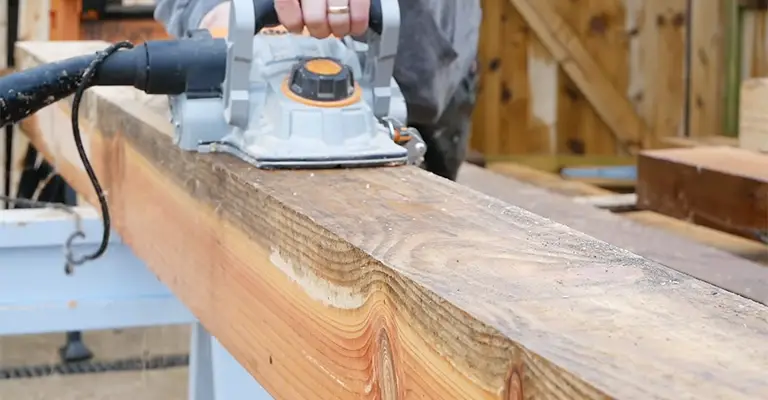
The wood species used to make the beams can have a significant impact on the maximum span of the beams. Different wood species have different properties that affect their strength, durability, and resistance to rot and decay.
Some of the most common wood species used for pergolas include cedar, redwood, and pressure-treated pine.
Cedar and redwood are naturally resistant to rot and decay, making them an excellent choice for outdoor applications like pergolas. They are also strong and durable, which means that they can support longer spans than other wood species.
However, they are also more expensive than other wood species, which can be a consideration for some homeowners. Pressure-treated pine is a more affordable option that has been chemically treated to resist rot and decay.
It’s a popular choice for outdoor applications because of its durability and low cost. However, pressure-treated pine is not as strong or durable as cedar or redwood, which means that it may not be able to support the same spans.
Beam Spacing
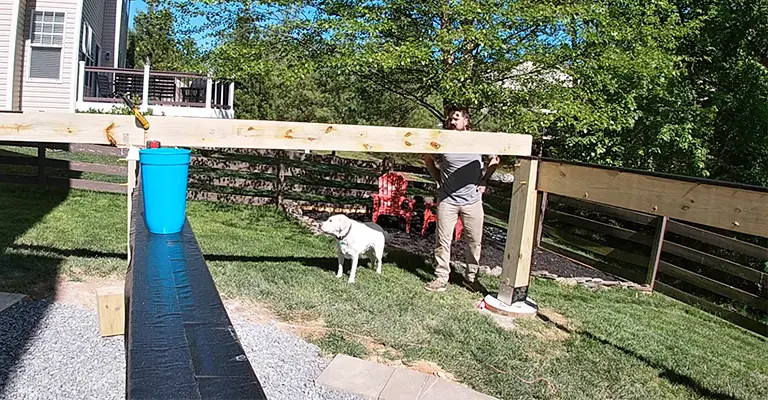
The distance between the support columns is another critical factor that affects the maximum span of a 6×6 beam.
The closer the support columns are to each other, the shorter the span the beams can safely support. Conversely, the further apart the support columns are, the longer the span the beams can safely support.
As a general rule of thumb, the maximum span for a 6×6 beam is 12 feet between support columns.
However, this can vary depending on the wood species used, the load requirements, and other factors. It’s essential to consult local building codes and regulations to ensure that your pergola meets all safety requirements.
Load Requirements
The load requirements for a pergola will depend on the intended use of the structure.
If you plan to hang plants or other decorations from the roof, you will need to account for the additional weight. The weight of the roof itself will also need to be factored in.
In general, a 6×6 beam can safely support a uniformly distributed load of 50 pounds per square foot over the span of the beam. However, this can vary depending on the wood species used and other factors.
Designing And Building A Safe And Sturdy Pergola
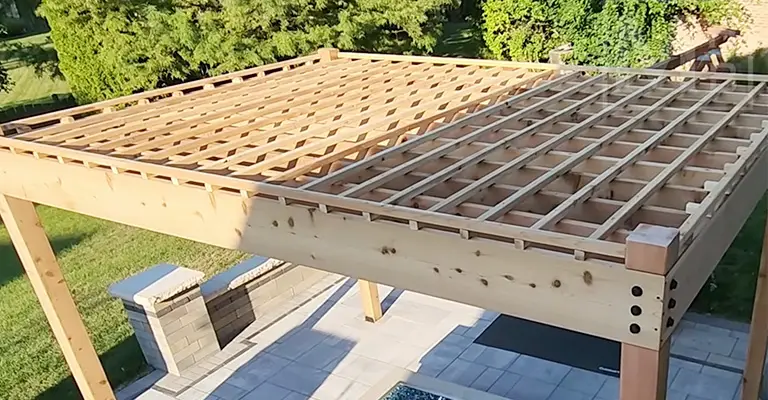
When designing and building a pergola, it’s essential to ensure that the structure is safe and sturdy enough to withstand the elements and any additional weight you might add.
Here are some general guidelines for designing and building a safe and sturdy pergola:
- Choose a strong and durable wood species, such as cedar or redwood.
- Space the support columns no more than 12 feet apart.
- Consider the load requirements for the intended use of the structure.
- Use appropriate hardware and fasteners to secure the beams and support columns.
- Consult local building codes and regulations to ensure that your pergola meets all safety requirements.
Methods Used To Build Pergola
When it comes to building the pergola, there are a few different methods you can use to attach the beams to the support columns. One common method is to use metal brackets or straps that are bolted to the columns and beams.
Another method is to notch the beams so that they fit snugly over the support columns, which can provide a more secure connection.
It’s important to use appropriate hardware and fasteners when building the pergola. Stainless steel hardware is a good choice because it is strong, durable, and resistant to corrosion.
Galvanized hardware is also a good choice because it is coated with a layer of zinc, which provides protection against rust and corrosion.
In addition to ensuring that the pergola is safe and sturdy, you’ll also want to make sure that it looks great and complements your outdoor space.
There are many different design options to choose from when it comes to pergolas, including different shapes, styles, and finishes. You can also customize the pergola with features like built-in seating, lighting, or a retractable canopy.
Frequently Asked Questions
What is the maximum span of a 6×6 beam for a pergola?
The maximum span of a 6×6 beam for a pergola depends on several factors, including the wood species used, beam spacing, and load requirements. As a general rule of thumb, the maximum span for a 6×6 beam is 12 feet between support columns.
What wood species is best for a pergola?
The best wood species for a pergola depends on several factors, including cost, durability, and resistance to rot and decay.
Cedar and redwood are strong and durable options that are naturally resistant to rot and decay, but they are also more expensive than other wood species.
Pressure-treated pine is a more affordable option that has been chemically treated to resist rot and decay.
Can a 6×6 beam support a retractable canopy?
Yes, a 6×6 beam can support a retractable canopy, but you’ll need to ensure that the beam is strong enough to support the additional weight. The weight of the canopy will depend on its size and the material it’s made from.
What is the best way to attach beams to support columns for a pergola?
There are several methods you can use to attach beams to support columns for a pergola, including using metal brackets or straps that are bolted to the columns and beams, or notching the beams so that they fit snugly over the support columns.
It’s important to use appropriate hardware and fasteners when attaching the beams to the support columns to ensure a secure connection.
Do I need a permit to build a pergola?
Whether or not you need a permit to build a pergola depends on the local building codes and regulations in your area.
In general, if the pergola is over a certain size or height, you may need a permit. It’s important to consult with your local building department to determine if a permit is required for your project.
Final Words
In conclusion, a pergola can be a beautiful and functional addition to any outdoor space, but it’s important to ensure that it is safe and sturdy enough to support its own weight as well as any additional weight from hanging plants or other decorations.
The maximum span of a 6×6 beam for a pergola will depend on several factors, including the wood species used, beam spacing, and load requirements.
By following some general guidelines for designing and building a safe and sturdy pergola, you can create a beautiful and functional outdoor retreat that will provide years of enjoyment for you and your family.







